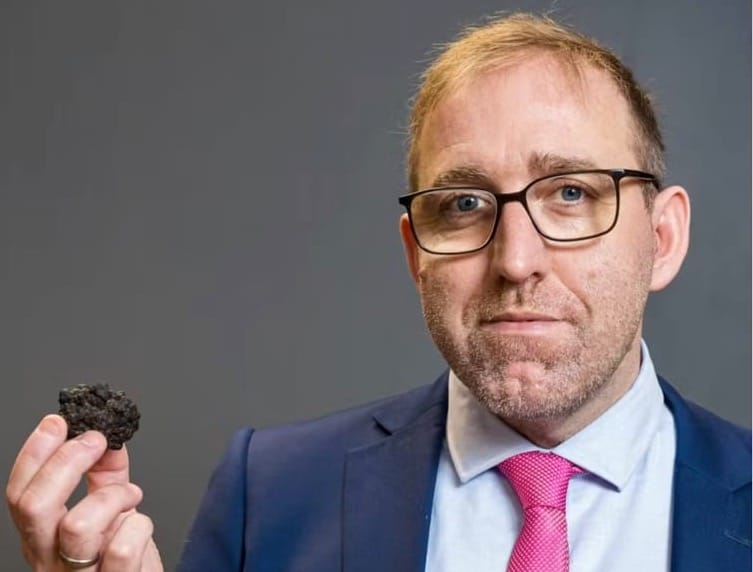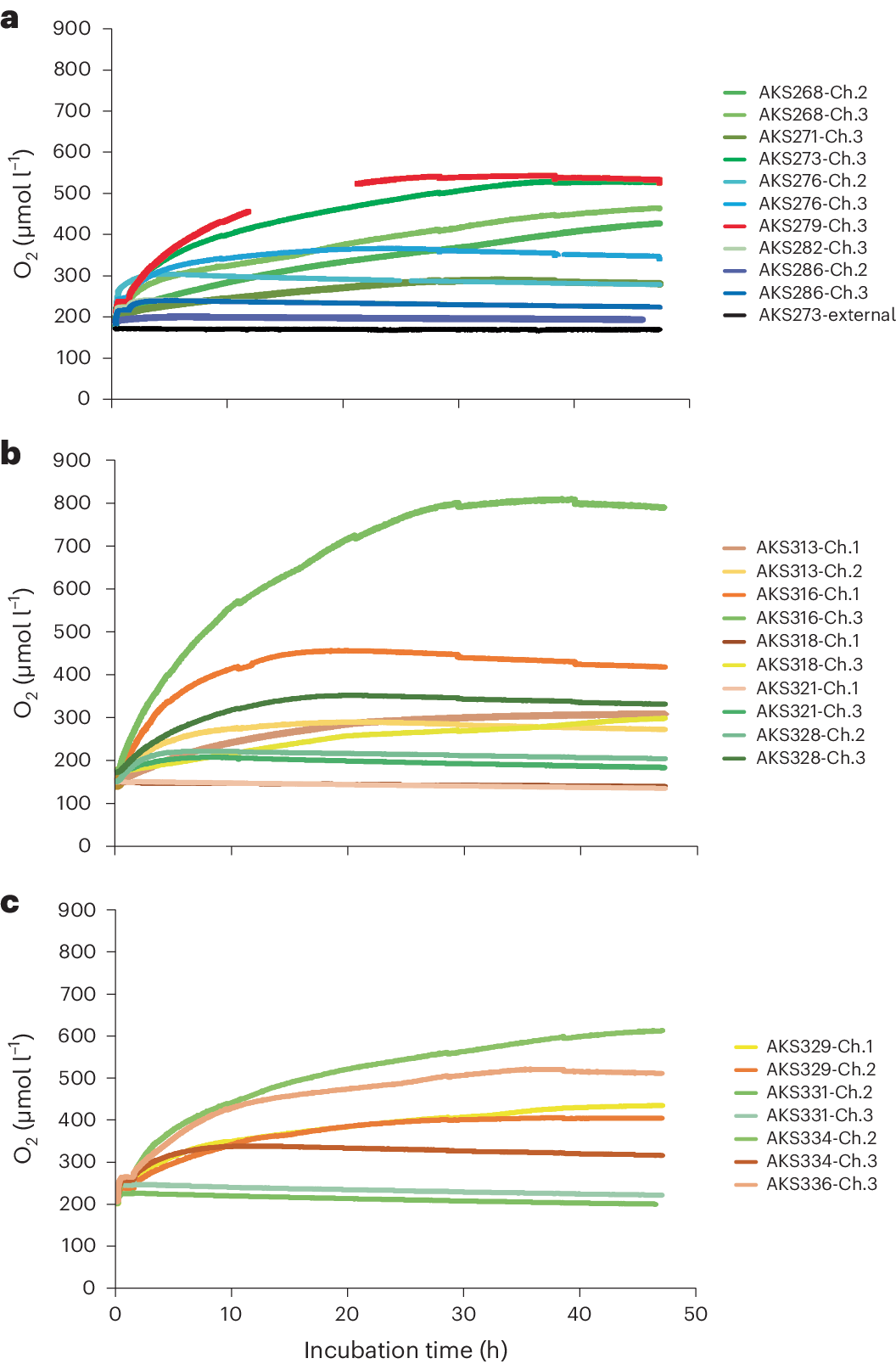Dark Oxygen professor Andrew Sweetman defends his research against searing industry pushback
The marine scientist has been feeling bullied ever since he released his controversial paper on 'Dark Oxygen' but stands his ground on scientific process.

The marine scientist, Professor Andrew Sweetman, whose research team reportedly discovered oxygen being created in the sunless depths of the Clarion Clipperton Zone (CCZ), has again hit back at high profile critics who say his methodology is flawed and he has cherry picked data.
Sweetman and his team at the Association of Marine Scientists published their findings in Nature GeoScience in July last year and were immediately met with strong media attention and swift backlash, most prominently from Canadian deep sea miner, The Metals Company (TMC), who funded a preprint rebuttal and issued an online statement rubbishing the research.
Ironically, TMC had also part-funded Sweetman's research under its deep sea science programme.
The mining company has a commercial interest in surfacing the metals that Sweetman claims are possibly giving off the oxygen, and if his study is correct, that would be another bow in the arrow of deep sea mining critics.
It would also explain why CEO, Gerard Barron, has been nothing short of derisive on social media:
For the last 2 years we were trying to save Sweetman from his “dark ego” and bad science - he was mistaking common experimental artefacts from his poor lander deployment protocols as a world-changing discovery. Yet, this wanna-be Einstein chose to go public with his unsupported…
— gerard barron (@gtbgtb) September 18, 2024
Rebutting the rebuttals
In a webinar yesterday, hosted by COBRA, a global research network committed to accelerating scientific understanding of deep sea ecosystems, Sweetman went on the defensive.
With 123 people on the Zoom call, it was the largest webinar attendance so far for Cobra who has been hosting similar talks monthly.
Unsurprising, since the paper has been accessed a whopping 345, 000 times in less than a year and is ranked first among the 62 tracked articles of a similar age in the journal.
Given such intense interest and the backlash, the Cobra hosts decided not to allow video or photos and did away with the usual ice breaking pleasantries among attendees (however, Deep Blue League was able to save a transcript).
The defence case
Safe space established, Sweetman presented the case for his astounding finding that in the darkest, plant-less, mineral rich depths of the Pacific Ocean, oxygen was being produced through a mechanism other than photosynthesis.
The hypothesis is that the polymetallic nodules of interest to miners, and the subject of Donald Trump's recent deep sea mining executive order, must be doing the oxygen production through some yet-unknown mechanism.
It's just a hypothesis
But in media reports, hypothesis translated to discovery, leading Sweetman to appeal for less headline grabbing language:
People need to read the paper carefully. Because there are many, many caveats that are put into the paper. We were very, very considerate with the wording that we used. We did not 100% settle on nodules being geo batteries. That's the first thing I just want to say. It's a hypothesis.
If not the nodules, then what?
The professor went on to say what the alternatives could possibly be and insisted that these were presented in his paper:
As we say in the abstract [of the paper], we hypothesise that seawater electrolysis may contribute. In other parts [of the paper], we say we hypothesise that the dark oxygen production may have partly resulted from seawater electrolysis. We talk about questions remaining. About this potential mechanism.
We do not know 100% that these nodules are acting as geobatteries. It could be microbial activity. It could be microbial activity linked to some sort of electrochemical reaction. Or it could be something completely different. We do not know the exact mechanism yet. But there does seem to be a link to the presence of manganese oxides, whether they're in the form of little granules or whether they're in the form of a poly-metallic nodule.
Claims of unsupported evidence
The latter, regarding form, was in response to criticism that the samples used as evidence did not contain the actual potato-sized poly-metallic nodules.
In its online rebuttal, TMC had written:
They fail to disclose that the chambers that support their thesis did not actually contain nodules. As Cechetto et al. (2023) note: “No nodules were collected [from the chambers] as they were either not present or in the form of manganese oxide granules”
Sweetman explained himself, evoking the world's favourite morning brew:
The chambers from the Western CCZ, they didn't have any nodules.
But all of the components that make up the nodules were present. But they were in the form of granules. So a way to imagine this is if you think about instant coffee granules. The sediment [used in the experiment] was covered sediment surface and within the sediments you had loads and loads of these metalliferous granules. So the nodules weren't there, the actual physical rocks, but the components that make up the nodules were present.
Why weren't control experiments reported?
Another criticism was that Sweetman "failed to report or discuss the results from experiments to test if oxygen production occurred without nodules".
In other words, control experiments didn't go his way so he ignored them - a stunning charge against the established Scottish scientist.
Having commissioned his raw data, TMC wrote:
During one benthic lander deployment, they kept chambers above the seafloor without any sediment or nodules inside. Oxygen levels rose in two out of three chambers, directly challenging Sweetman et al.’s claim that the oxygen increased due to the presence of nodules.
TMC was referring to the AKS287 landing for control experiments, which have since been the subject of discussion among scientists and others in the know, but was not included in Sweetman's published paper:
We didn't report these experiments for a number of reasons. We had so much data showing that there wasn't any air trapping, but also we only had a ...1500 word limit. And a maximum number of figures so we couldn't put everything in. There was lots that we weren't able to put into the paper. That's why it's a brief communication.
Professor Sweetman told the webinar that oxygenated seawater is what caused the oxygen spike in the control samples.
All you're seeing here is the injection of oxygenated water. If I show you some data, some examples where we've injected oxygenated seawater you can see at the start, there's a bump [in oxygen] up to around 300 micromole. And then it slowly decreases, whereas in the no injection [control] experiment, you don't see any such bump up. So yeah, what you're seeing here isn't a bubble. It's basically just the oxygenated seawater is just uh being injected in.
Experimental artifact
But perhaps the most brutal of all the critiques is that the results of Professor Sweetman's dark oxygen study were nothing more than amateurish experimental artifact, a concept in science where the set up of an experiment produces the result rather than the thing being studied.
But Sweetman refutes this, claiming that such possibilities were considered, but ultimately dismissed by his team.
When we found this, I started thinking, well, it must be something we're doing. We've got to be introducing oxygen in some way. And we tested the following experimental artifacts. We thought, well, maybe the stirrer or the optode is somehow creating an electric current, that [it was] splitting seawater into oxygen and hydrogen. [Or] the dark oxygen production was due to oxygen leaking from the plastics of the chambers, that the chambers didn't ventilate properly.
And at the end of the day, I think all of us on the paper basically looked at the evidence and said it's highly unlikely that it's an experimental artifact. I mean, you can decide if that's what you want to do. Or you could accept the alternative scenario that maybe there is something going on down at the seafloor that is capable of generating oxygen.
On official challenges to Nature GeoScience
Some of the critiques above have been submitted to Nature GeoScience as an official academic challenge to Professor Sweetman et. al's popular paper.
There have been reports of up to five, but the researcher says only one is under consideration. He says some have been rejected and some have not been shown to his team by the journal, for reasons unknown.
So there isn't five as everyone, as a lot of people have been saying, there is only a single rebuttal and we're just waiting what the decision from the journal is regarding that rebuttal. My personal preference is that it be accepted and our reply be accepted because it will hopefully stop a lot of the a lot of the backlash.
Further experiments
Having dispatched his critics, Professor Sweetman acknowledged that more research was now necessary to learn more. Testing for hydrogen, for example, to support the electrolysis hypothesis, something his critics had picked up on.
Yeah, I mean, we would have loved to have measured hydrogen production, our hydrogen concentration in the chambers, we weren't able to in our experiments. When we were finding this [the results], we didn't think about the electrochemistry hypothesis as being one of something to test. So we, you know, by the time that we'd finished all the cruises, it was only then that we thought, well, could it be an electrochemical reaction?
With funding of £2 million secured from Japan's Nippon Foundation to return to the deep, Sweetman will be meeting with colleagues at the end of summer to plan his next set of experiments.
He invited scientists on the call and perhaps in general to get in touch as they were an open shop.
Please. Reach out. We'll try and find a way to… you know get you incorporated, get you involved, get your samples. Yeah.
Deep Blue League will be watching.

For editorial comments or questions: [email protected]


